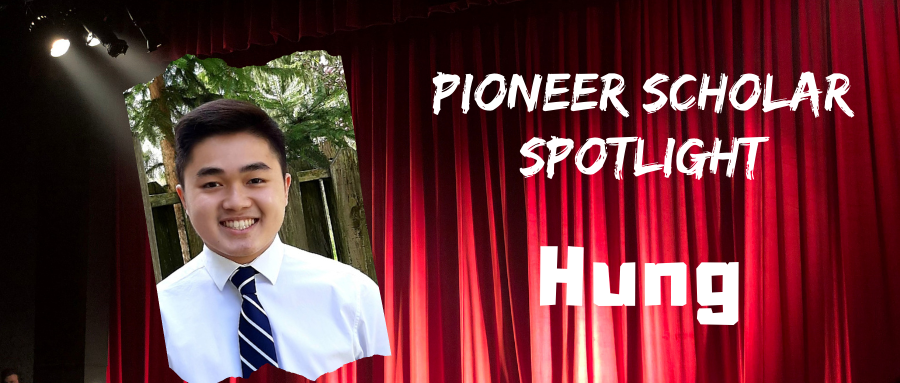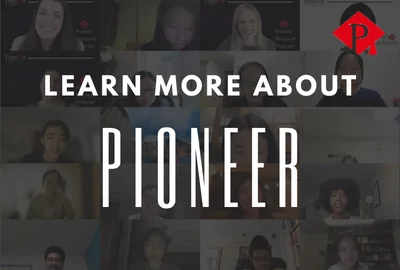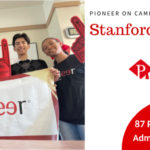“My goal with any type of project or problem solving I do is that it needs some sort of social impact and some form of human motivator to give me a reason to do this right.”
Pioneer scholar Hung has liked to make things as long as he can remember. Hung was born in Vietnam, grew up in Portage, Michigan, and is currently attending MIT, where he thinks he will major in mechanical engineering and minor in entrepreneurship. His interest in making things began, he says, with “the sack of Legos we got from a garage sale.” He would build “all sorts of stuff from random spaceships to tanks and buildings and things that you only conjure up in your imagination.” He didn’t yet know that was called engineering, but his love for making things took another step when he took a woodworking class in sixth grade and made balsa wood bridges and catapults using “an intuitive approach to engineering.” He enjoyed that so much that he took the woodworking class all three years of middle school.
Finally, in high school, Hung was introduced to the concept of “engineering” and realized that there are engineers in virtually every field and that the “things” that engineers make are not just tangible objects. He attended both a public high school and a magnet school that focused on STEM subjects, where he learned computer skills and did three years of research projects before he applied for his Pioneer Research Program. This variety of experience gave Hung a solid foundation for his Pioneer experience in the research concentration of nanotechnology. It was another new field for Hung, and that was part of its appeal. His goal was to learn something new.
In addition to making things in an engineering sense, Hung is also a creative thinker who makes metaphors and creates concepts, and this gift for visualizing and verbalizing the learning process is a key to how Hung can learn so much about so many different fields. He describes the relationship between STEM subjects as a series of mounds (concentration areas) connected by a web of roots (things that all the areas have in common). He describes the learning process as “scope exploration,” figuring out how large an area of study is, how many “branches” it has, and where individual “leaves” of learning fit onto the branches. If you can mentally map where something fits into the overall structure, he says, you’ll remember it longer.
Hung has also acquired an important insight about learning anything new: there will be things you like and things you don’t like. “There’s never a perfect thing to learn or a perfect topic.” The point is to keep going and enjoy what you can and know that what you’re uncomfortable with is probably helping you grow as a person.
Hung is already becoming an entrepreneur in his first year of college study, working with a group of colleagues to develop an SNS based integrated learning service to help children in communities with little or no access to wifi develop good learning skills, addressing a need that has been made clear by the same pandemic that is giving him time to work on it.


 Doing research is commonplace.
Doing research is commonplace.


